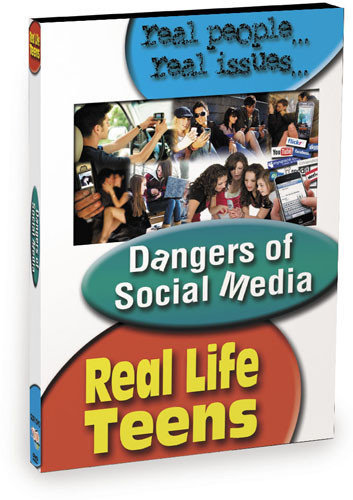The Real Life Teens series is an unbiased and realistic look from the perspective of teens, at the wide variety of issues teens face today featuring young teenagers telling their real stories, in their own words. The series discusses significant issues in adolescent society and cuts through many barriers with its honest and relevant advice and information. A revolutionary Guidance series, Real Life Teens offers unprecedented access into the hidden teen world that's insightful, fascinating and provocative. Told from the perspective of teens, with input from teachers and school personnel, our young subjects confront the trauma and drama of coping and surviving in today's often confusing world. We all know that communicating with teens can be difficult - they often do not like to be talked to by "adults" - but they do listen to what their peer group is saying and thinking. This is the rationale behind Real Life Teens. Each program is designed to provoke thought and conversation amongst teens about topics many find unable to voice & to show students their particular issue is shared by many others. This ground-breaking series should be part of every school's resources as well as Libraries, peer support groups, teen clubs, mental health and social service agencies and media resource centers. Social networking sites are open to anyone however offer a low level of security and protection. Because students often post detailed and specific information, they can be more easily stalked by strangers or even acquaintances. The purpose of most of these networks is to allow individuals and groups to keep in touch and track the daily lives of each other. By keeping things at the status quo on the social networking sites, the result is a micro society of friends that is more open than ever before. However students don't often consider the dangers that social networking introduces to their lives. The content they place on the networks can easily make them vulnerable to all sorts of threats. Some of these threats are minor, but some can be incredibly severe. A photo shared between two people can quickly become a viral phenomenon. By using the text messaging service on their cell phones, computers or other electronic devices, teens engage in sexting by sending flirtatious messages back and forth. Sexting is currently illegal under federal law. It falls under the creation, distribution and possession of child porn and is a felony offense. While some lawmakers are working to change this, others are prosecuting both those taking the pictures and those possessing them. Subjects Covered Include: What are the benefits of Social Networking Sites?, What are the dangers of Social Networking?, What should you not post on your site?, What is the impact from incriminating & inappropriate information posted on network sites?, Can postings on a network site effect employment? The Felony charges associated with sexting.

 Please wait...
Please wait...




